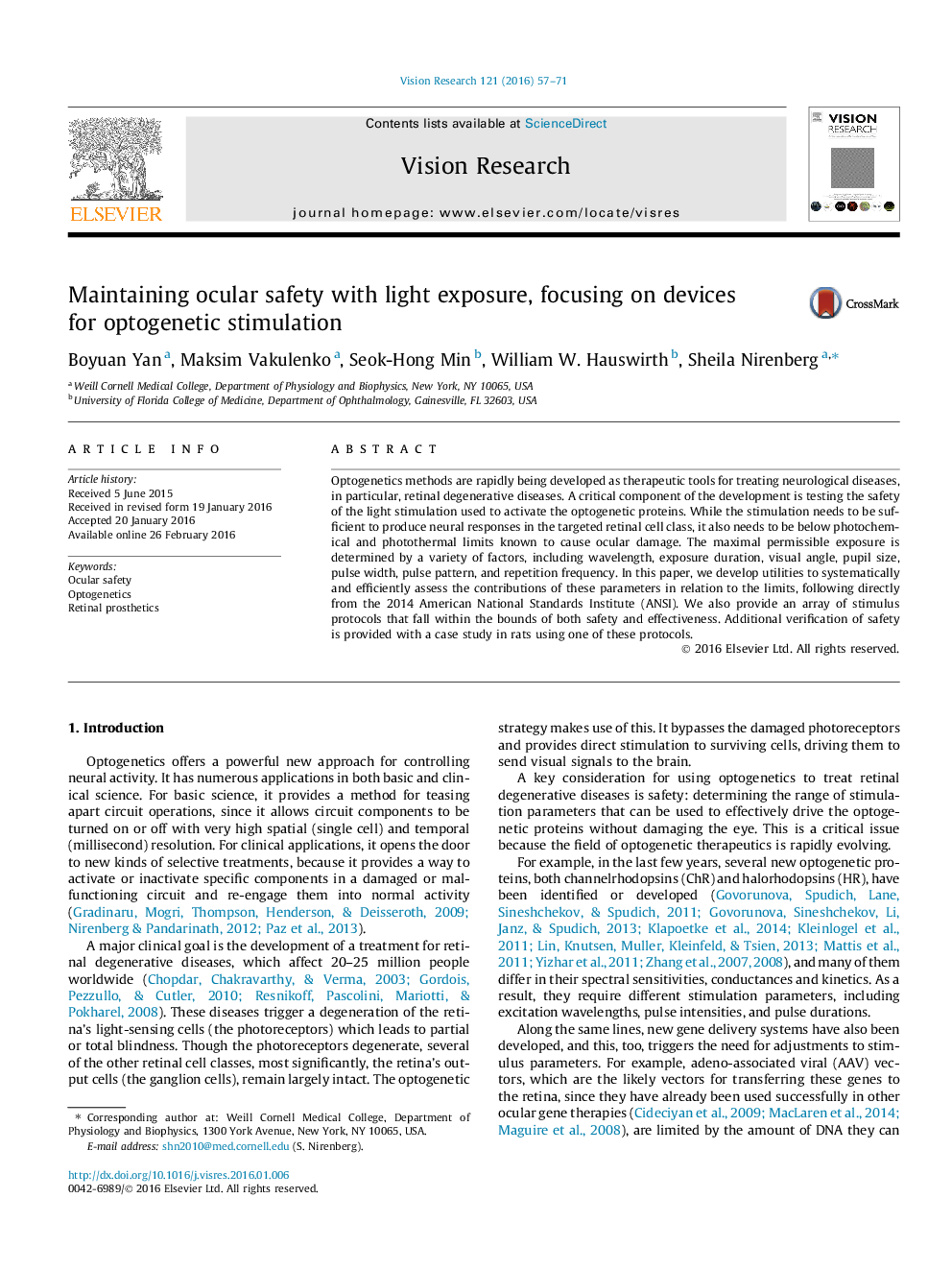| Article ID | Journal | Published Year | Pages | File Type |
|---|---|---|---|---|
| 6203031 | Vision Research | 2016 | 15 Pages |
•Optogenetics-based treatments are being rapidly developed for visual diseases.•A key issue is the safety of the light exposure needed for optogenetic stimulation.•The limiting factors, based on the ANSI (2014) Standards, are presented.
Optogenetics methods are rapidly being developed as therapeutic tools for treating neurological diseases, in particular, retinal degenerative diseases. A critical component of the development is testing the safety of the light stimulation used to activate the optogenetic proteins. While the stimulation needs to be sufficient to produce neural responses in the targeted retinal cell class, it also needs to be below photochemical and photothermal limits known to cause ocular damage. The maximal permissible exposure is determined by a variety of factors, including wavelength, exposure duration, visual angle, pupil size, pulse width, pulse pattern, and repetition frequency. In this paper, we develop utilities to systematically and efficiently assess the contributions of these parameters in relation to the limits, following directly from the 2014 American National Standards Institute (ANSI). We also provide an array of stimulus protocols that fall within the bounds of both safety and effectiveness. Additional verification of safety is provided with a case study in rats using one of these protocols.
